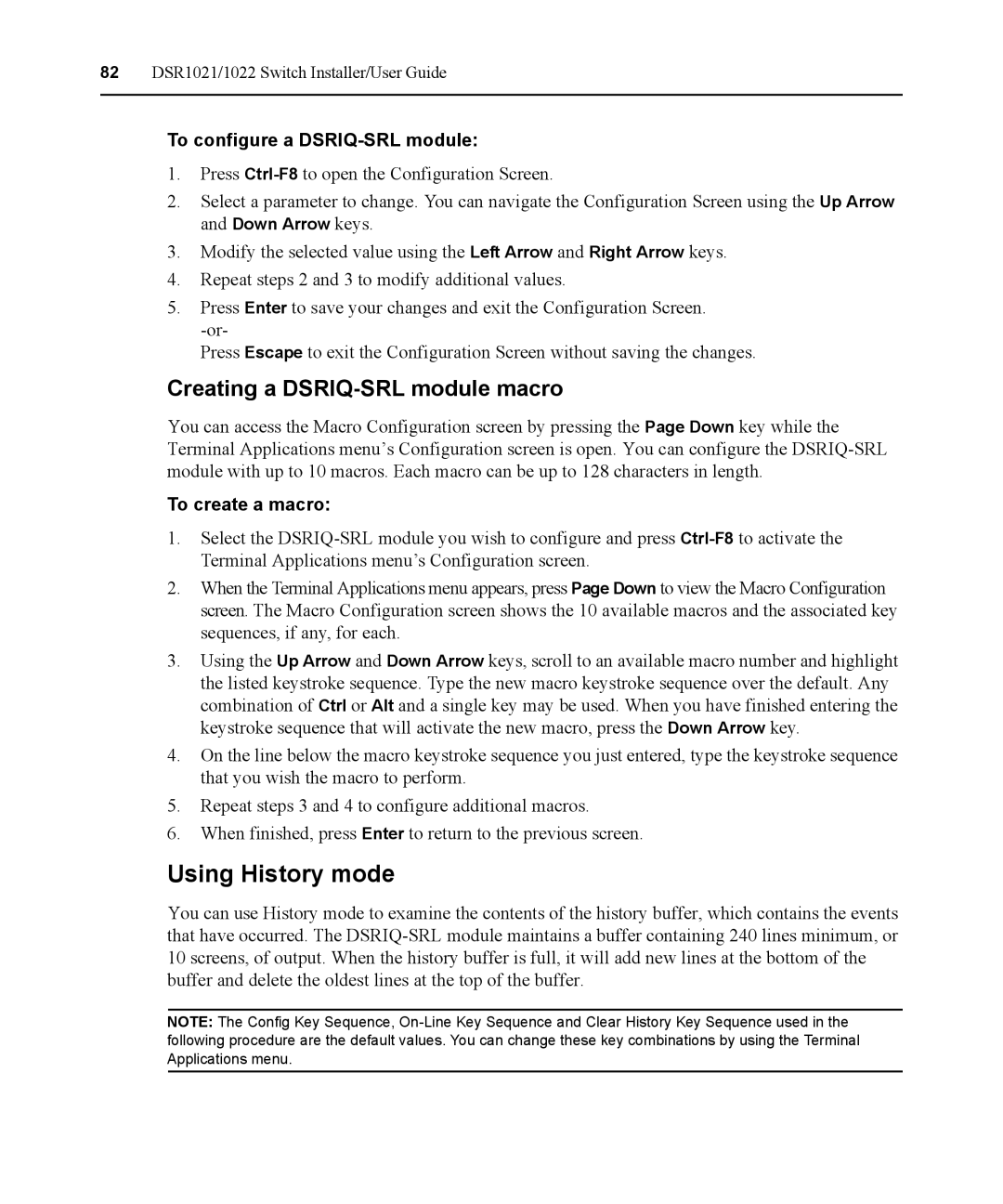
82DSR1021/1022 Switch Installer/User Guide
To configure a DSRIQ-SRL module:
1.Press
2.Select a parameter to change. You can navigate the Configuration Screen using the Up Arrow and Down Arrow keys.
3.Modify the selected value using the Left Arrow and Right Arrow keys.
4.Repeat steps 2 and 3 to modify additional values.
5.Press Enter to save your changes and exit the Configuration Screen.
Press Escape to exit the Configuration Screen without saving the changes.
Creating a DSRIQ-SRL module macro
You can access the Macro Configuration screen by pressing the Page Down key while the Terminal Applications menu’s Configuration screen is open. You can configure the
To create a macro:
1.Select the
2.When the Terminal Applications menu appears, press Page Down to view the Macro Configuration screen. The Macro Configuration screen shows the 10 available macros and the associated key sequences, if any, for each.
3.Using the Up Arrow and Down Arrow keys, scroll to an available macro number and highlight the listed keystroke sequence. Type the new macro keystroke sequence over the default. Any combination of Ctrl or Alt and a single key may be used. When you have finished entering the keystroke sequence that will activate the new macro, press the Down Arrow key.
4.On the line below the macro keystroke sequence you just entered, type the keystroke sequence that you wish the macro to perform.
5.Repeat steps 3 and 4 to configure additional macros.
6.When finished, press Enter to return to the previous screen.
Using History mode
You can use History mode to examine the contents of the history buffer, which contains the events that have occurred. The
NOTE: The Config Key Sequence,
